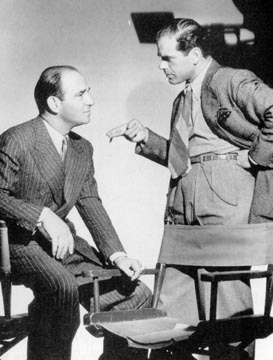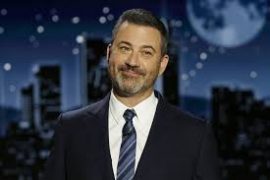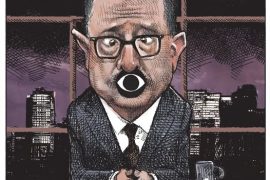
Here it is, not even one week into December, and already broadcasters have aired the big four Christmas favourites: Rudolph the Red-nosed Reindeer, A Charlie Brown Christmas, Dr. Seuss’ How the Grinch Stole Christmas and “It’s a Wonderful Life.”
The newest, The Grinch, first aired 49 years ago. “Wonderful Life” turns 80 next year.
The good news is that all will get a second airing between now and Dec. 25. See those dates plus air dates for a dozen other Christmas favourites and new specials in this feature I wrote this week for The Canadian Press.
Watching part of “Wonderful Life” for the eleventy-billion-millionth time Saturday night, and having also caught “Meet John Doe” the night before on TCM, I was struck by director Frank Capra’s storytelling approach. Always brisk and entertaining, although often dismissed as “Capra-corn,” his films seem to rise and fall in public favour depending on the times in which they are viewed.

“Meet John Doe” is all about a powerful one-percenter–played by Capra’s favourite villain Edward Arnold–who concocts and, through his grip on the media, whips into a fevour pitch an instant mania for a grass-roots movement. Think, well, Donald Trump with better hair. The ruse in the movie is that the movement–all about people being better neighbours in tough times–is completely a-political. Arnold’s character, however, ultimately plans to seize this trumped-up power base to take an independent run at the presidency.
Capra is not subtle. He studied German propaganda films and stole from them. He knew how to pull an audience into darkness and back towards light.
advertisement
The scenes of frenzy he creates with montages of newspaper headlines spilling off presses and roaming armies of newsies swarming public rallies suggests today’s Internet is slow and pokey by comparison.
His films seem all-American. He quotes passages of the Declaration of Independence and holds Washington and Lincoln up as ultimate leaders. Yet he’s pretty fearless about exposing injustice and imbalance in America, a bold stance during the flag-waving era of the second world war. “The people” were always the real Americans in Capra films.
His ultimate point about how the people have to stand up and take back the real power seems so very today. Be suspicious of politicians, he seemed to stress in “Mr. Smith Goes to Washington” (1939). Be wary of corporate overlords who have politicians and media in their back pocket he says in “Meet John Doe.”
It was no accident Capra called his company Liberty Films or that the best ones ended with the Liberty Bell clanging away in a Philadelphia tower.
It makes you wonder what Capra and favourite writer Robert Riskin–two men who were apparently poles apart politically–might have come up with today if their target was the NRA, or the religious right. Where is this generation’s Capra, making those films? Would Capra be directing The Daily Show, or clanging that Liberty bell all over Facebook?






